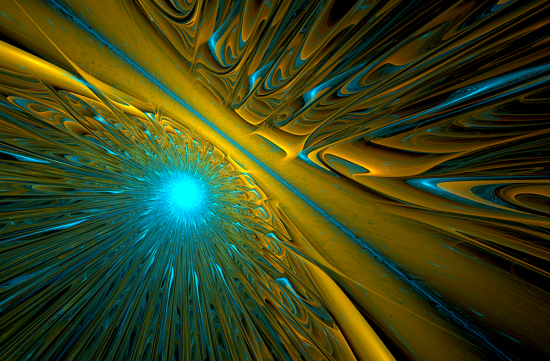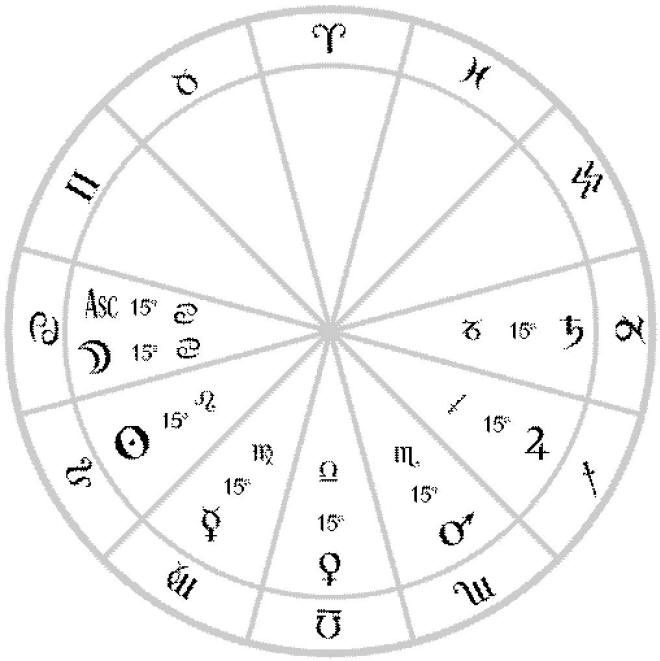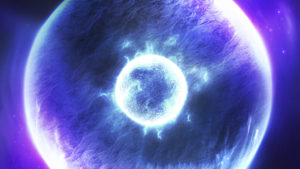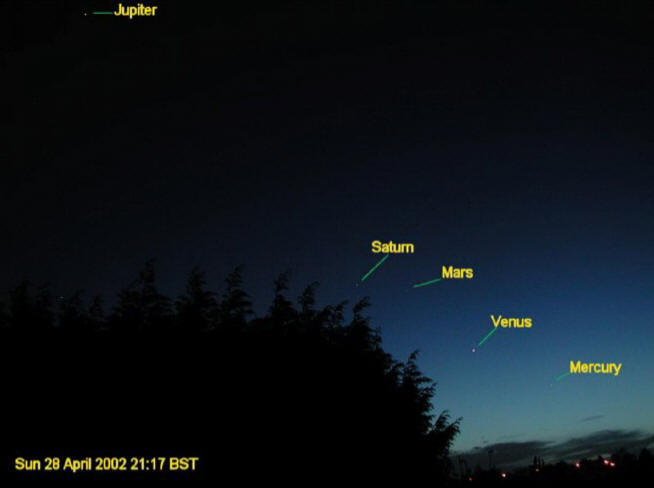Astronomy in Collision

“Collision” by MWVA Visual Arts
Jul 8, 2015
Modern astronomy is like a blind man, panicked, without his cane, running. There are collisions.
It’s not because astronomy has lost its sight; it’s because it has gained a second sight, another sense beyond the five that evolved. It has gained a sixth extrasensory perception conferred by its own invented machines, a machine sense, an instrumental perception. New telescopes can “see” ultraviolet, x-ray, infrared, and radio “light”; space probes can “touch” and “taste” other planets; they can “smell” interplanetary space; and they can “listen” to interstellar and intergalactic space.
Perception of the cosmos with these machines is entirely different from visual and earth-based perception. The perceived cosmos is entirely different: interstellar space is not silent; interplanetary space is not empty; planets do not have the textures or flavors that had been predicted; the new light reveals shapes and behaviors that were thought to be impossible.
And the new perception disrupts the old: the old no longer makes sense. The consequence is indistinguishable from blindness. Mystery objects appear where astronomers never imagined anything. The old concepts crash into them and break and bleed. The new percepts don’t conform to the old concepts. Astronomers make up fantasy objects, silly things, to save their theories: black holes that pull everything in while simultaneously blowing everything away, dark matter that can’t be detected, dark energy that always exactly makes up for what gravity can’t explain: blank checks for which swindlers would go to jail. None of it can be tested in a lab: the imaginary universe is mostly unobservable, like the universe of the leprechauns.
Astronomers model the fantasies with video games and pretend that the games are more real than the data they crash into. But the surprises continue, the crashing into data continues, the invention of silliness continues. They need new sight and new insight, new theories and concepts: They need serious things, testable things, in place of silly things.
But the silliness has institutional inertia: the crashing of silliness can crush seriousness. Astronomers are running, blind and panicky, through a crashing and crushing landscape. One foot treads on defeat, the other on despair, and the stars they see are from crashing into the mysterious things. This will not go away with a vote among the good ole boys. It’s likely that no one will survive.
Someday, a new astronomy may be constructed on the blood and broken bones. It will be an extraterrestrial and transhuman astronomy that is organized around Birkeland currents and double layers and plasma instabilities. Its laboratories will contain terrellas and discharge tubes instead of Cavendish balls. It will not recognize Newton or Einstein or their followers as having done real science.
Scientists hate to acknowledge the emotional content of their learning: The passive voice protects them from their feelings. They fail to understand that their minds are webbed with metaphors, and they take their light as literal. So even their light is darkness. Isaac, how sad, after your victories over all the obstacles that confronted you, now to be impaled on the otherness of an alien cosmos, to be gored by its strangeness, to die without being able even to limn its outline. Your believers are cast into utter darkness.
Mel Acheson
Joining the Dots Part One: Fireworks on New Year's Day
Dec 08, 2009
Can there be any truth in the traditional linkage of a total conjunction of planets and universal disaster or is this just arrant nonsense?
“All that the earth inherits will … be consigned to flame when the planets, which now move in different orbits, all assemble in Cancer, so arranged in one row that a straight line may pass through their spheres. When the same gathering takes place in Capricorn, then we are in danger of the deluge.”
This statement is attributed to the Babylonian priest, Bēl-re’ušunu (3rd century BCE), better known as Berossus, and epitomises the once widespread astronomical concept of the ‘Great Year’. From the Roman Empire to China, ancient philosophers defined the ‘Great Year’ as a large cosmic cycle, completed when the five naked-eye planets, the sun and the moon appear in linear conjunction. It was thought that such complete conjunctions occasioned cosmic catastrophes – devastating floods and fires that destroyed the preceding cosmos and inaugurated a new world.
Standard astronomical models do not acknowledge any mechanisms accounting for global tides or fires in response to planetary conjunctions. While the tidal effects of the moon are satisfactorily explained with gravity, the same force cannot demonstrably be made to work for the planets, as has often been pointed out.
The crux is that this dismissal rests on the antiquated perception of interplanetary space as a vacuum, in which gravity is the only operational force. With the coming of the Space Age, this simplistic paradigm has been incontrovertibly refuted. It is now known that most of the interplanetary space, and of the entire cosmos, consists of plasma and almost every body in the solar system is enclosed in a plasma sheath, technically a double-layer structure that serves to shield the object inside from electric fields impinging on the shell.
Teardrop-shaped magnetotails, which are structurally comparable to the comas and ion tails of comets, extend out into space from the earth, Venus, and most other planets. These are often so long as to extend to the orbit of the next planet, sometimes ‘tickling’ the protective sheath around that object as they point away from the sun. The solar equivalent to these planetary magnetospheres is the solar wind, which is ultimately responsible for auroral displays on the earth and on other planets.
The physical composition and the interaction of these magnetospheres are extremely complex and scientists are only just beginning to get a handle on the subject. What is already clear, however, is that the possibility of the sun or any of the planets ‘influencing’ the electromagnetic weather on another body is no longer so remote.
As the plasma sheaths of different bodies brush against each other in the ecliptic plane, they effectively complete a giant electric circuit, allowing a transfer of electric charge between adjacent planets. Such discharging offers a straightforward explanation for the ‘forgotten’ Pythagorean conviction that ‘comets’ arise when planets form linear conjunctions. Can it also account for the destructions by fire and flood the ancients believed would happen when the planets line up?
To find out, it is necessary to make a careful distinction between apparent linear conjunctions as seen from a viewpoint on earth and actual linear conjunctions in space.
Insofar as some or all the naked-eye planets are regularly seen to arrange themselves in linear conjunctions, ancient astronomers might have based their ideas concerning a ‘Great Year’ on observation. The approximate conjunction of Jupiter, Saturn, Mars, Venus, Mercury and the rising sun stretched out over a number of constellations on the 15th. April 2002 is comparable to the so-called thema mundi or ‘cosmic birth chart’ outlined by Hellenistic astrologers, in which the seven traditional ‘planets’ span across the entire starry sky. Could such ‘apparent’ lineups of planets have inspired associations with transient events of the kind envisioned by the likes of Berossus?
In theory, current knowledge about the solar wind and the ‘windsock’ behaviour of planetary magnetotails allows that a lineup of bodies in the solar system might cause extremely violent disturbances of the geomagnetic field. For such a magnetospheric explanation to work, however, the linear arrangement of the moon, the sun and the five naked-eye planets cannot have been apparent, as, in that case, the plasma tails of these bodies could not line up to produce a ‘closed electric circuit’.
Also, the earth would have to be physically displaced outside the string of planets, yet if it was to experience any of the resulting ‘fireworks’, it must have been caught in the crossfire itself. As the earth’s ionosphere would be loaded to excess with charged particles, an outburst of auroral activity might go some way towards explaining the reported ‘conflagration’ of the world.
The requirement of a ‘real’ linear conjunction of planets, including the earth, in true state fits better with Berossus’ intimation that the “gathering” of the seven players occurred in a single constellation, but results in a visual separation of the exterior planets on the night side and the interior planets on the day side, in solar transit. The ancient authorities on the subject of the Great Year all lived at times when astronomy was advanced enough to distinguish apparent visual arrangements in the sky from inferred physical models of reality.
That a great conjunction triggers destructive interplanetary ‘storms’ fits into the segment in time when astronomers first became interested in the periodicities of planets. The idea may have received its ultimate inspiration from mythical memories about a time when comets and meteors were rampant, when the world suffered in flames, and when stars and planets saw an apparent reorganisation that followed the breakup of a previous linear arrangement of bodies. In the real world, a linear alignment of planets with the solar wind may sometimes have coincided with an exceptionally intense discharge event.
The above is not to suggest that planetary conjunctions must always precipitate cosmic discharging or ‘bad weather’ on earth – far from it. It is easy to think of complicating factors that help to explain why, for example, the conjunction of 2002 did not wreak any havoc. For one thing, many congregations of planets may simply be loose enough to allow sufficient leeway for plasma tails to ‘miss’ the sheaths of other planets. The role of coronal mass ejections warrants investigation – are these a required cause or a consequence of the ‘fireworks’ accompanying a great conjunction?
What are the restrictions on the orientation of the solar wind on such occasions? Finally, the intensity of electric discharging during conjunction must be modulated by the initial charge differential between the bodies involved, but this will vary over time, gradually being cancelled out during quiescent periods, when no extraneous forces impinge on the system.
The bottom line is that ancient speculations about a link between catastrophic events and planetary movements present a challenge that is well worth renewed attention. In this particular case, plasma physics offers an intellectually palatable way to vindicate the ‘astrological’ claim that the antics of the planets can affect the conditions of life on earth as a whole. The role of concomitant effects, such as the repositioning of the geomagnetic field, tsunamis and earthquakes, also invites further consideration. As a theory of cosmic time, the ancient notion of a ‘Great Year’ may thus be rescued from the dustbin of scientific theorising.
Contributed by Rens Van der Sluijs
http://mythopedia.info
Books by Rens Van der Sluijs:
The Mythology of the World Axis
http://www.lulu.com/content/1085275
The World Axis as an Atmospheric Phenomenon
http://www.lulu.com/content/1305081
|
|
|

Birth horoscope of the cosmos according to Hellenistic astrology, showing a linear conjunction of the seven
‘planets’ spanning across seven constellations of the zodiac. Courtesy Meredith Garstin.
|
| |
|
| |
Joining the Dots Part Two: The Dating Scene in the Sky
Dec 09, 2009
Ancient astronomers from the Hellenistic world to China believed that the cosmos is ravaged by deluges and fires whenever the five naked-eye planets, the moon and the sun ‘meet’ in a linear conjunction.
Modern astronomers baulk at this notion of a ‘Great Year’ for essentially two reasons. The first objection, that planetary conjunctions cannot produce any noticeable effects on earth, is challenged when the role of the solar wind and planetary magnetotails is taken on board, as previously discussed in part one. What about the second objection – a chronological discrepancy between traditional dates given for such conjunctions and the modern findings of retro-calculation?
For ancient chroniclers working within the framework of a ‘Great Year’ theory, the most recent turning-point in this cycle functioned as an ‘era base’ for the present historical age. Though most ancient estimates for the present era base are now lost in time, at least one has survived.
In the traditional chronology of Hindūism, the present age is the Kaliyuga, the beginning of which was dated by the famed Indian astronomer, Āryabhaṭa (476-550 CE), to the 17th/18th. February 3102 BCE, when all seven traditional planets were in conjunction in 0º Aries. Intriguingly, this date roughly agrees with two comparable calendar bases in Latin America.
The British Mayanist, Sir Eric Thompson (1898-1975), deduced that the ‘Long Count’ of Mayan astronomy commenced on 11th/12th. August 3114 or 3113 BCE. In 1644, the Spanish historian, Fernando de Montesinos, outlined a Peruvian account of history involving nine eras governed by rulers called ‘Pachacuti’, that must have had its beginning date in 3061 BCE. Though these calendar bases were not demonstrably associated with a linear conjunction of planets, they were almost certainly linked to astronomical movements and are close enough to Āryabhaṭa's estimate to suggest an underlying truth of some sort.
Time and again, modern commentators have pointed out that Āryabhaṭa’s date for the most recent ‘great conjunction’ does not correspond to astronomical reality, as “a mass conjunction did not take place” at that time. Armed with the evidence of retro-calculations, nowadays performed with software programmes, Bartel van der Waerden, Rupert Gleadow, Anthony Aveni, David Pankenier, Bruce Masse and the pair of David Kelley and Eugene Milone all dismissed the traditional date on this ground, suspecting that “the conjunction of 3102 B. C. was not observed, but calculated” – as if the fact of ‘calculation’ is a sufficient explanation for the perceived error – and proposing various alternative dates on which similar mass conjunctions would have occurred.
Despite the best intentions of these archaeoastronomers, none of their solutions are entirely satisfactory. On one hand, it is not clear whether their retro-calculating efforts concentrated exclusively on apparent linear conjunctions, as seems to be the case, or whether actual alignments, including the earth itself, were also considered. On the other hand, the proposed solutions typically do not involve all the traditional seven planets or present them only in a loose grouping, rather than the single, straight line stipulated by the ancient theoreticians of the ‘Great Year’.
To a truly open and curious mind, the refutation of Āryabhaṭa’s date for the latest ‘Great New Year’ on chronological grounds carries very limited weight, for the simple reason that the orbits of the planets during the 3rd millennium BCE and earlier are not known with certainty. Retro-calculations, for all their mathematical genius, provide not a smidgen of proof without a control set of observational data.
The earliest extant records of orbital measurements of the planets date from Hellenistic Mesopotamia, while ephemerides recording the positions and phases of the sun and the moon reach back a few more centuries. For the 2nd millennium BCE, the evidence for planetary orbits boils down to a handful of possible descriptions of eclipses, the interpretation of which is fraught with difficulties of a philological and an astronomical kind. Before that, all evidence for detailed astronomical observations evaporates entirely.
Without any data checks, the mathematical extrapolation of current orbits to the distant past is a futile exercise, not only because it rests on the logical fallacy that the present is the key to the past, but also because Newton’s law of gravity applied to the solar system predicts chaos in the term of a few million years at most. Indeed, the limited set of information conveyed by ancient scientists includes some very credible indications that planetary orbits did shift within the span of human history. For example, the Roman intellectual, Varro († 27 BCE), is on record with the claim that Venus “changed its color, size, form, course, which never happened before nor since”. Needless to say, even the slightest adjustment in Venus’ orbit would nullify any retro-calculations for the relevant period.
To allow that orbital changes, however so subtle, have occurred in the recent past is not necessarily to endorse traditional dates for the time of ‘creation’ or the cosmic New Year. For that, one would need to know how Āryabhaṭa arrived at his date. The nub is the obstacle presented by the prevailing intransigent attitude towards the role of electromagnetic forces in the orbital dynamics governing the solar system.
An electromagnetic theory of the great conjunction cannot only shed light on the traditional link with a world-devouring fire, but actually predicts subtle shifts in planetary orbits as well. In his proposed model of Electrically Modified Newtonian Dynamics (EMOND), electrical theoristWallace Thornhill has recently argued that, when an electric charge exchange transpires between adjacent planets, orbital adjustment and stabilisation are the inevitable consequences: “If the mass of an inner planet is reduced by charge exchange with the next outer planet, … the orbital radius of the inner planet must decrease proportionally to conserve energy. Similarly, the outer planet must gain mass and its orbit expands to conserve energy.”
An electromagnetic perspective on the workings of the solar system expects orbital adjustments at times of linear conjunction, when plasma tails interact with each other. If that may be granted, the use of retro-calculations to verify traditional dates for the most recent turning of the Great Year is invalidated and a greater reliance can be placed on traditional dates, provided that these did not themselves root in more ancient equivalents of retro-calculation.
Contributed by Rens Van der Sluijs
http://mythopedia.info
Books by Rens Van der Sluijs:The Mythology of the World Axis
http://www.lulu.com/content/1085275
The World Axis as an Atmospheric Phenomenon
http://www.lulu.com/content/1305081
|
|
|




